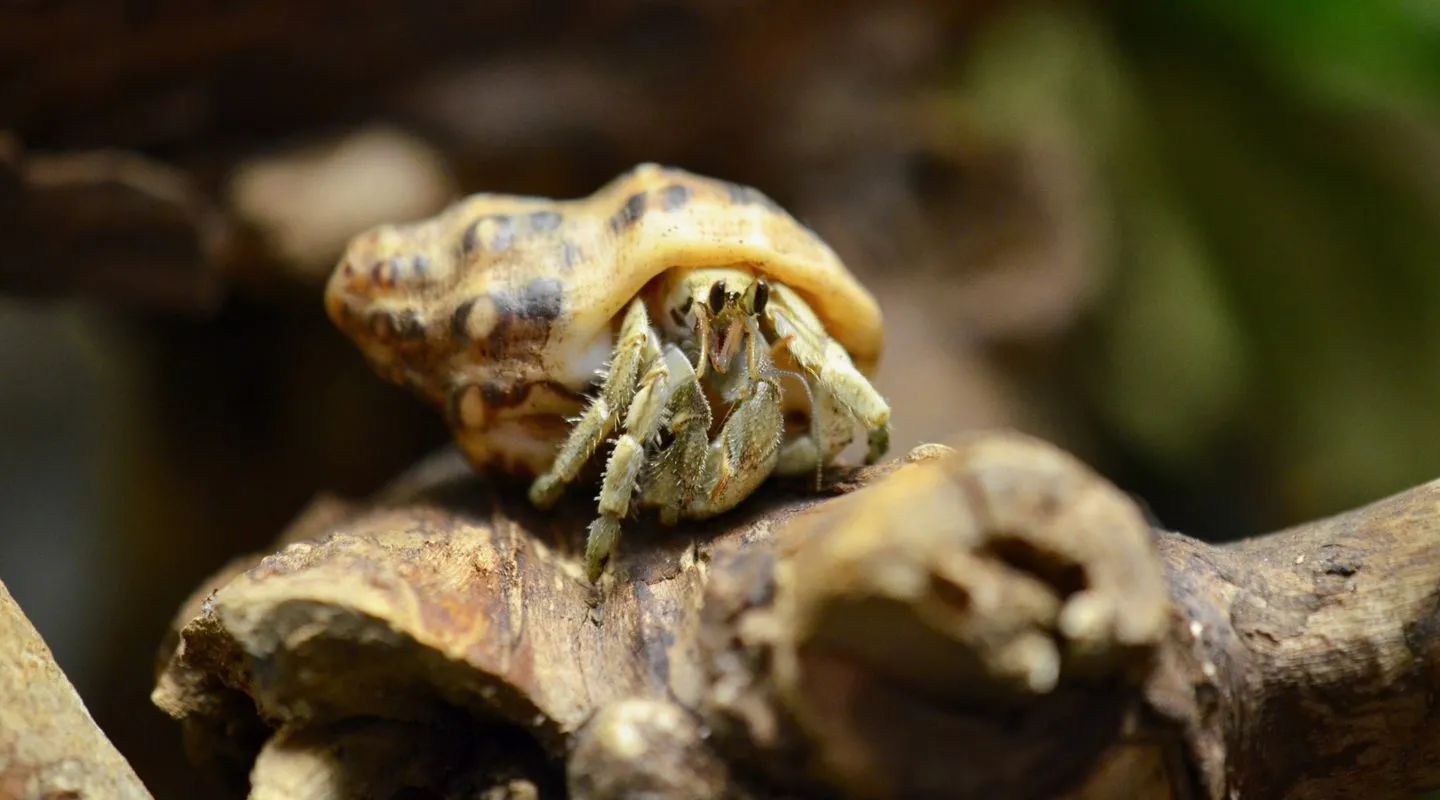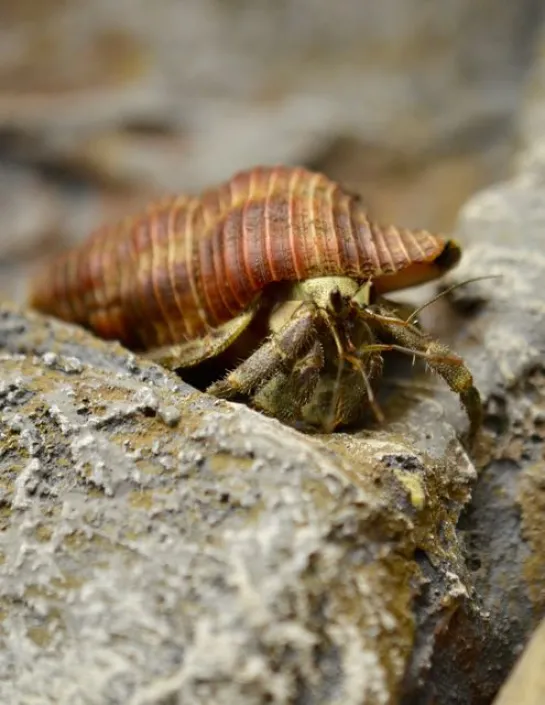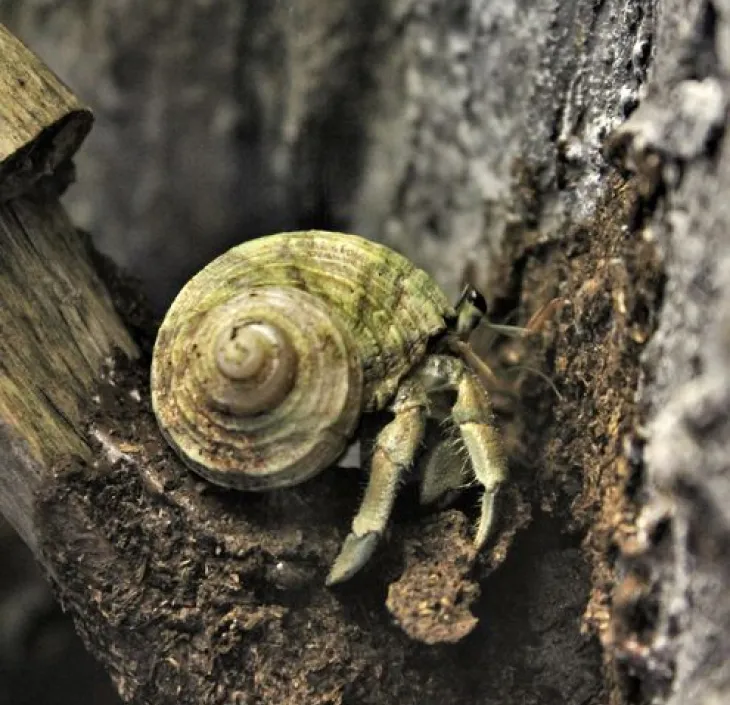The terrestrial hermit crab can "drink" by filtering the sand if it has a high moisture content.

Arthropods or shellfish

Identity card
Not evaluated
East Africa, Indian and Pacific Oceans
Mangroves, in forest areas near the beach, in sandy dunes and in bushy areas.
The visible part of its body (outside its shell) measures on average 15 mm.
The hermit crab is omnivorous.

The shell of a hermit crab plays an important role in protecting its soft abdomen from predators.
The terrestrial hermit crab can "drink" by filtering the sand if it has a high moisture content.
This species is primarily nocturnal: during the day, it buries itself in a damp substrate and comes out at night. This helps it to keep its water reserves and stay hydrated. In the wet season, it can be found in bushy areas several hundred metres from the beach.
It is mainly found in mangroves, in forested areas near the beach, in sandy dunes and in bushy areas. It hides under piles of dead leaves during the hottest hours of the day.
The hermit crab must moult to grow. During moulting, it buries itself in the sand for several weeks. As it grows, the hermit crab must change its shell to find a bigger and stronger one. They can then swap them.
It can produce sounds with its claw.
The Ocean Mag
In the spotlight
Poissons, crevettes, requins, les animaux qui se reproduisent ou sont élevés à Nausicaá rejoignent les espaces d'exposition.

Article
Savez-vous combien d’espèces de requins sont à découvrir à Nausicaá ? Apprenons-en plus sur ces animaux fascinants !
Article
Which came first, the egg or the fish? A brief overview of eggs and reproductive strategies in marine animals.